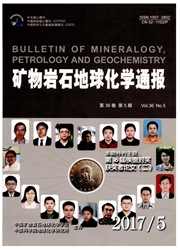

 中文摘要:
中文摘要:
CO2的地质封存技术是减少CO2向大气排放的一种有效方法。矿物封存由于储存时间长,安全性高,对CO2地质封存至关重要。本文以鄂尔多斯盆地石盒子组地层为例,利用模拟软件TOUGHREACT研究了CO2注入后,各矿物的溶解和沉淀机理,确定固碳矿物和CO2的矿物封存量;通过改变绿泥石和长石类矿物的初始含量,研究原生矿物组分对CO2矿物封存潜力的影响。结果表明,以石英、长石为主的砂岩储集层中,长石类、绿泥石和高岭石是主要的溶解矿物,铁白云石是主要的固碳矿物,原生矿物中绿泥石和长石类矿物对CO2的矿物封存量影响很大,绿泥石和长石类矿物的体积分数增加,CO2的矿物封存量也增加。
 英文摘要:
英文摘要:
The geological storage of CO2 is an effective way to reduce CO2 emissions into the atmosphere. Researches on mineral trapping are crucial for CO2 geological storage since mineral trapping has longer storage time and higher safety than others. This study used TOUGHREACT program to study dissolution and precipitation mechanisms of minerals in the shihe- zi strata, Ordos Basin, after CO2 injection. The sequestration capacity of CO2 and minerals with CO2 sequestration ability were confirmed. We also studied influences of primary minerals on the sequestration capacity of CO2, and the result shows that feldspar minerals, chlorite and kaolinite are the major of dissolved minerals while ankerite is the major mineral to sequestrate CO2 in the sandstone reservoirs composited mainly by quartz and feldspar. It also shows that contents of chlorite and feldspar group minerals in primary minerals have a great effect on mineral sequestration of CO2 , the mineral sequestration of CO2 increases with the increase of the volume fraction of chlorite and feldspar group minerals.
 同期刊论文项目
同期刊论文项目
 同项目期刊论文
同项目期刊论文
 期刊信息
期刊信息
